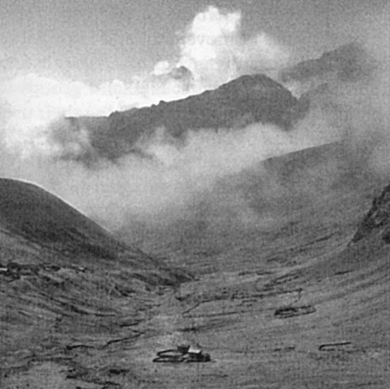
JOHN WAYNE JANUSEK. Ancient Tiwanaku. xvi+368 pages, 111 illustrations. 2008. Cambridge: Cambridge University Press; 978-0-521-81635-9 hardback £45 & $80; 978-0-521-01662-9 paperback £15.99 & $24.99.

JOHN WAYNE JANUSEK. Ancient Tiwanaku. xvi+368 pages, 111 illustrations. 2008. Cambridge: Cambridge University Press; 978-0-521-81635-9 hardback £45 & $80; 978-0-521-01662-9 paperback £15.99 & $24.99.

Review by Mathieu Viau-Courville
Sainsbury Research Unit, University of East Anglia, UK
(Email: M.Viau-Courville@uea.ac.uk)
John Janusek, a leading scholar on south-central Andean archaeology, has produced a much-needed new synthesis on the important Middle Horizon (AD 600-1000) polity known as Tiwanaku in his new book, Ancient Tiwanaku. It is published in a series on early societies and is set to replace Alan Kolata's 1993 Tiwanaku: portrait of an Andean civilization. Rather than viewing Tiwanaku as a dominant ruling empire, Janusek's extensive account depicts it instead as a main player within the Lake Titicaca Basin. A setting that crystallized its dynamic social and political development.
Chapter 1 introduces some of the available sources on Tiwanaku and then outlines its chronology within the prehispanic cultural development of the Titicaca Basin. The chapter concludes with brief theoretical considerations emphasising the dynamic and transformative potential of human practice in political and social change. Next, Janusek cites the palaeoecological and limnological evidence for climatic changes in the Titicaca Basin around AD 1100 (chapter 8 returns to the question of the role played by the drastic change in the levels of Lake Titicaca, contributing, in part, to changing the socioeconomic organisation of the Basin itself).
Chapter 3 synthesises current knowledge on the early period of the Titicaca Basin by focusing on four formative cultures: Chiripa and Qaluyu in the Basin area, Wankarani to the south, and the late formative Pukara to the north of the lake. Janusek demonstrates how the political and religious systems of these formative polities played a determinant role in Tiwanaku's rise to power whereby elites manoeuvred these regional polities, transforming them into a centralised state - Tiwanaku. This broad culture-historical description of Tiwanaku's emergence leads to the Tiwanaku archaeological complex proper, introduced in chapter 4. Here Janusek views the site as a monumental rendition of the immediate physical and cosmological environment. Chapter 5 describes the relationship between the Tiwanaku city-core and its hinterland while chapter 6 examines the dynamic relationship between Tiwanaku and its close and distant settlements. This relationship, he argues, mainly took two forms, one of minimal impact, or incorporative relationship, as opposed to a high-impact one, or transformative shift.
Chapter 7 addresses the emergence of the Wari state in the Ayacucho area to the west, the most significant cultural and political development in the Middle Horizon next to Tiwanaku. In this much-debated topic, Janusek posits that Tiwanaku and Wari are two autonomous states with a peer-polity relationship. In effect, a long-term relation of exchange, influence, alliance and conflict between two states of similar organisation and complexity. Chapter 8 discusses the collapses of Wari and Tiwanaku. Whilst several interpretations have been proposed, Janusek interprets their almost parallel collapse as the sociopolitical fragmentation of their centralised systems. Evidence for this includes the abandonment of the main centres at the end of the Middle Horizon as well as the systematic destruction of monoliths and sacred architecture which might indicate a dismantling of ideologies and symbols. In the case of Tiwanaku, this fragmentation was partly accelerated by the drop of Lake Titicaca around AD 1100. This drop caused, amongst other things, a disruption of the raised-field farming economy practiced in the Titicaca Basin.
Janusek's book is most valuable, not least because it contains an extensive and up-to-the-date bibliography, including a refreshing number of recent doctoral dissertations. It is also reassuring to see the inclusion of publications by more recent or less commonly cited Bolivian researchers. These recommendations aside, I find myself disagreeing with parts of Janusek's discussions on Tiwanaku iconography, in particular his interpretation in chapter 4 of the Sun Portal and its central figure as a prime figure reproduced on other media. His statement, in passing, that the central figure of the Sun Gate is also represented on ceramics probably refers to human-like heads with some formal similarity to the central figure of the Sun Gate. Whilst there are indeed similarities, it remains debatable whether these ceramic representations do in fact refer to that specific figure and not to other very similar figures found on other monoliths at Tiwanaku (e.g. the Ponce or Bennett monoliths). In a later discussion on the Pariti material culture (chapter 6), Janusek again briefly states that figures found on two Keru (drinking vessels) represent the Sun Gate central figure. Presumably these are the two Pariti Keru excavated by a Bolivian-Finish team in 2004-5 which show characteristics similar to those of the Sun Gate central personage. Though one of the figures, the smaller one, might include some of the Sun Gate's central personage attributes, the other displays a range of Wari-style attributes not common to Tiwanaku iconography. Such formal similarities are not sufficient reason, in my opinion, for interpreting the Pariti figures as mere representations of the Sun Gate central figure.
In sum, Janusek succeeds in synthesising existing research on Tiwanaku in an impressively solid way. But much work can still be done to shed further light on its iconography, and the objections registered above can be regarded as part of a healthy debate. All in all, this book is a valuable contribution to Tiwanaku scholarship, setting a benchmark for the newer generation of students and scholars. Likewise, it is a well researched and executed cultural case study for undergraduates to use.
